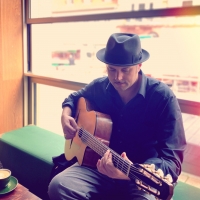DjangoBooks.com
Welcome to our Community!
Categories
- 20K All Categories
- 1.1K General
- 477 Welcome
- 59 Archtop Eddy's Corner
- 146 CD, DVD, and Concert Reviews
- 385 FAQ
- 26 Gypsy Jazz Italia
- 27 Photos
- 202 Gypsy Picking
- 21 Unaccompanied Django
- 15 Pearl Django Play-Along Vol.1
- 17 Gypsy Fire
- 45 Gypsy Rhythm
- 1.4K Gypsy Jazz University - Get Educated
- 131 Gypsy Jazz 101
- 227 Repertoire
- 219 History
- 708 Technique
- 51 Licks and Patterns
- 6 Daniel Givone Manouche Guitare Method Users Group
- 20 Eddie Lang Club
- 1.3K Gypsy Jazz Gear
- 802 Guitars, Strings, Picks, Amps, Pickups and Other Accessories
- 460 Classifieds
- 49 Recording
- 62 Other Instruments
- 18 Violin
- 5 Mandolin
- 22 Accordion
- 7 Bass
- 10 Woodwinds
- 348 Gypsy Jazz Events
- 143 North America
- 110 Europe
- 95 International






















Comments
Considering the notes are placed on a 5 lines staff you just imagine the note placed graphically immediately below the given note is the transposed one for the Eb instrument :
So two solutions can be written on a line or on a space of that 5 lines staff (or stave):
- the transposed note is placed on the line below the one where is written the given note
- the transposed note is placed on the space below the one where is written the given note
For example:
under C there is an A
under D there is an B
under A there is an F
under G there is an E
and so on...
It works very well and is immediate.
On sax you can also very easily imagine your note is two fingers below the written note:
- you play B with the 1 finger of left hand (1=index) and you must close 2 and 3 to get a G
- You play F with the 1 finger of right hand (1=index) and you must close 2 and 3 to play a D
Best
Pretend the bass clef is a treble clef, play the notes as written and add three sharps to the key signature
F 1b becomes D 2#. G 1# becomes E 4#
Bb 2b becomes G1#
Db 5b becomes Bb 2bs etc etc
Eg if I'm transposing from C to A for alto, if I see a G I think 5th and write E. I think getting your brain thinking that way easily is handy in all sorts of ways.